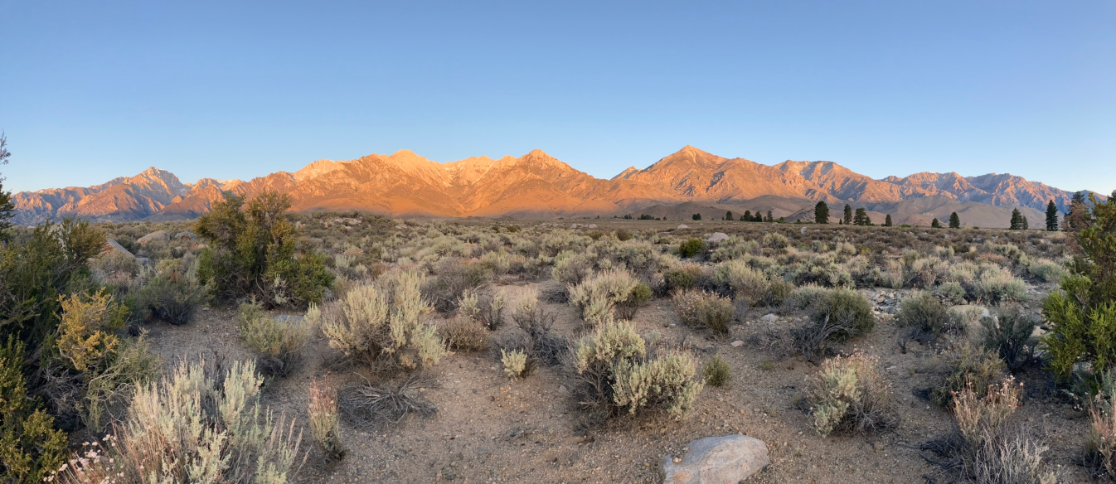Grasshopper Sparrows!
/While conducting field work this past breeding season, my randomly generated IMBCR plot found me in Northern Nevada’s Owyhee Desert. IMBCR stands for Integrated Monitoring in Bird Conservation Regions, and is a program developed by the Bird Conservancy of the Rockies in 2007. Since then, a number of organizations have collaborated with the Bird Conservancy to conduct these surveys across much of the American West. Each breeding season these surveys are completed from North Dakota to West Texas, Colorado to California, Washington to Arizona, and many places in between. Three years ago, GBBO joined this partnership, and began surveys in Nevada, Arizona, and California. The large scope of these standardized surveys creates a powerful tool to monitor birds at a regional level, including conservation priority species across the breadth of their ranges.
So back to the Owyhee Desert, where I’m driving roads that haven’t seen traffic in who knows how long. After finding a newly-eroded canyon through my access road, I nearly gave up on this survey, but Ben (my survey partner, who was doing a nearby Nevada Bird Count transect) and I finally ended up finding a navigable alternative and got to camp well after dark. When I woke up, I was in a landscape that I didn’t know existed in Nevada. As far as I could see was lush perennial grassland, several species of grass, waist-high Great Basin Wild Rye among them. My first impression as I started walking from camp was the almost deafening chorus of Western Meadowlarks.
It wasn’t until minute 2 of my second point that I heard it, almost dismissible as insect noise, this quiet, mechanical “tsk-tsk-tzzzzz”. At first I did pass it off as a Grasshopper, but it was so regular and a little too loud, and then it clicked. Grasshopper SPARROW! After nearly 10 minutes of staking out this particular cluster of bunchgrass, I finally saw him and my suspicions were confirmed. Tucked just below the highest point of the grass was a small, squat, flat-headed, relatively large-billed sparrow cocking his head back and singing his insect-like song.
As my survey went on I encountered several more, and by the end of the morning I had conservatively counted 11 singing males. This species has been on my radar ever since I heard tales a few years ago of these guys in northern and eastern Nevada, but I had never come across them. Jean Linsdale, back in 1951, reported them as a summer resident in small numbers in the northeast part of the state, but records have been sparse. Not surprising then, when I finally found them, I was in one of the most inaccessible parts of Nevada. The combination of distance from town and rough roads (where roads exist at all!) makes the Owyhee Desert pretty much off limits to most Nevada Birders. Given all this, and factoring in annual variation, it is hard to tell what is actually going on up there. Maybe there are always loads of Grasshopper Sparrows singing their hearts out in the Owyhee Desert with no humans to hear them, or maybe we had a bonanza year because of higher precipitation levels and greater growth of grasses and forbs. We will be surveying there again in 2020, so we’ll report back then!
The Owyhee Desert is not the only part of the state that is largely inaccessible and has unique habitat. With such a large area and such concentrated populations, Nevada has long been one of, if not the most under-birded state. This combined with other factors led to the creation of Great Basin Bird Observatory and the first edition of the Nevada Breeding Bird Atlas 20 years ago….and 20 years later there are still new things to learn about Nevada’s avian community. So for those who are willing to get off the beaten path and explore a bit, who knows what you might find!
For those who are unfamiliar and/or curious, the Owyhee Desert is Northeast of Winnemucca, in between the Santa Rosa and Independence Mountain Ranges. It sprawls into impressive canyon lands in Idaho and Oregon to the North, and peters out as it hits the Owyhee Bluffs to the south, about 30 miles north of I-80. It can be accessed from the west via Paradise Valley, but the primary entry points are on the east side through the Duck Creek Indian Reservation and the Town of Owyhee or by Wilson Creek Reservoir from the Midas-Golconda Road.
- Ned Bohman





